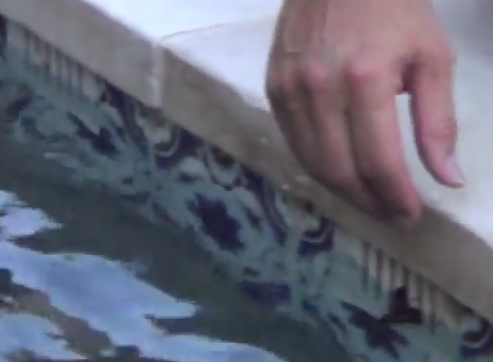#15: Hidden Spa Spillway

The trouble with conventional approaches is that they can take the creativity out of watershape designs.
Almost always, for example, spas are placed directly adjacent to or within the walls of a swimming pool. For a couple generations now, this has led designers to specify open spillways to move water from the spa into the pool, thereby creating a single body of water so far as circulation, filtering and sanitizing are concerned.
That’s fine, but it’s become automatic – and that makes lots of designers rebellious. An obvious firebrand on this front is David Tisherman, who was so dissatisfied with the usual approach that he took to splitting his spillways into multiple slots, thereby challenging convention and, for many designers, completely changing the way they looked at moving spa water into a pool.
In the video linked below, you’ll see a different approach to linking a spa and pool: Here, we moved the spa a fair distance back from the pool and then hid the connection between the two beneath the deck. I like this approach because it enhances the illusion that the spa is really a fountain.
Another approach we might have taken would have been adding an exposed runnel between the spa and pool. This wasn’t pursued, however, because the backyard is set up as a social hub and nobody wanted to create a trip hazard. If the layout had been different, however, a runnel would have been a great alternative.
To see how we set up our hidden spillway system, click here.
Mike Farley is a landscape designer with more than 25 years of experience and is currently a designer/project manager for Claffey Pools in Southlake, Texas. A certified member of Genesis 3’s Society of Watershape Designers, he holds a degree in landscape architecture from Texas Tech University and has worked as a watershaper in both California and Texas.










